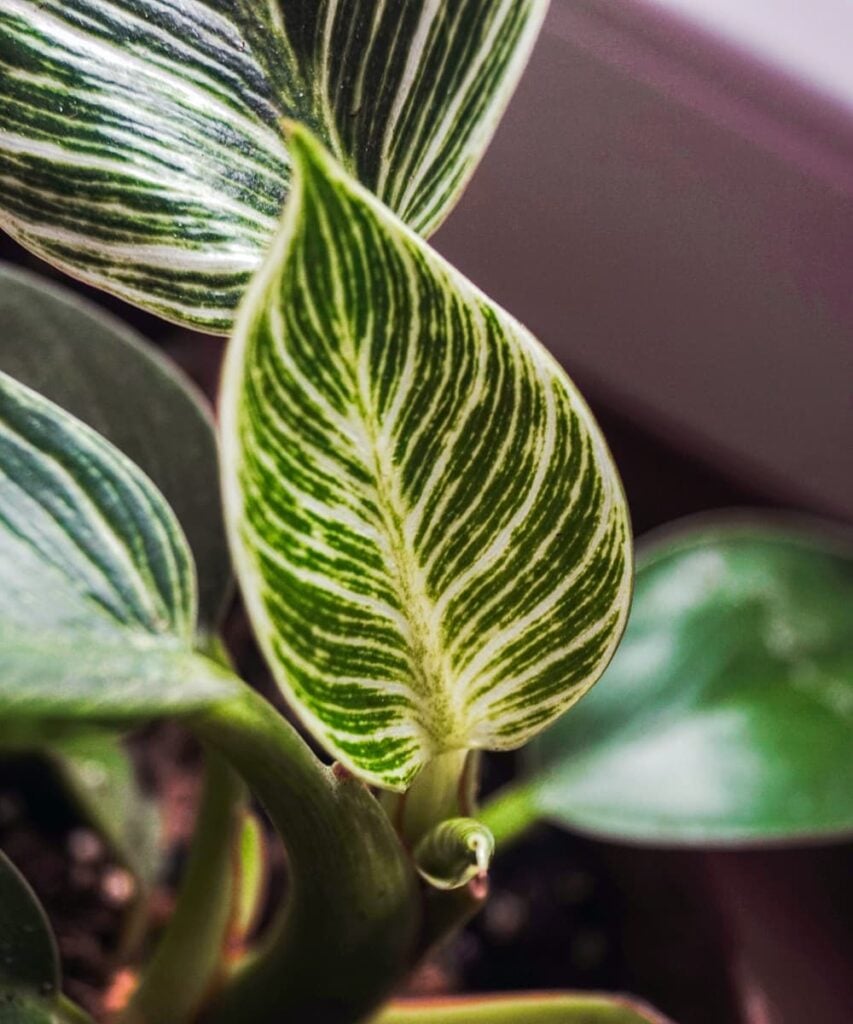Everything You Need to Know about Philodendron Care

The name “Philodendron” comes from Greek words philo, meaning love and affection and dendron, meaning tree. This aptly describes the majority of the species in the genus as vines or climbing plants that love to grow on or up trees. There are two types of philodendrons: vining and non-climbing plants. The vining variety grows several feet and non-climbing types have an upright growth habit and are excellent foliage plants for containers. Check out our Philodendron collection.
Philodendron Care
The Philodendron genus contains hundreds of species of beautiful foliage plants. Their leaves are typically large, green, and glossy, adding a bit of their native tropical flair to your home.
While caring for a philodendron plant, try to create a natural tropical type environment. Keep your plant’s leaves looking and functioning their best by regularly wiping them off with a damp cloth. Let’s discuss philodendron care in details.
Light
Philodendrons typically grow best in partial sunlight. They naturally would get dappled light under a tropical canopy, not direct sun. Indoors, set them up by a window that gets bright, indirect light. Too little light can result in leggy growth with lots of space in between the leaves. But too much light can cause many of the leaves to turn yellow at the same time. (Only a few leaves yellowing is typically just normal aging.)
Soil
One of the most important factors while caring for philodendron is moisture management. These plants prefer well-draining, consistently moist but not waterlogged soil. When the soil is too wet, the roots may have difficulty absorbing nutrients and oxygen – and harmful bacteria and fungi can take hold more easily.For container plants, it’s recommended to replace your philodendron’s soil every couple of years or so.
Water
Prefer watering your philodendron only when the top two inches of the soil is dry. Change your watering schedule according to the size of the plant. If the plant is happy, the leaves will be bright and perky. If the leaves become droopy or start to turn yellow or brown, on the other hand, you could be underwatering. And if leaves are yellow, it may be the former or latter. The non-climbing varieties tend to have a little more drought tolerance than the vining species. Reduce your water for indoor plants and during the winter.

Temperature and Humidity
The temperature tolerance of philodendrons varies based on the species. In general, they should not be exposed to temperatures below 12.7°C. Indoors protect them from cool drafts, such as those from an air-conditioning vent. These plants like humidity, so you might have to boost humidity around your philodendron if you live in a dry climate.
Fertilizer
Philodendrons are generally medium to heavy feeders. Use a balanced liquid fertilizer monthly on your plant in the spring and summer. Then, reduce feeding to every six to eight weeks in the fall and winter. If your plant isn’t getting enough food, its growth will be slower than normal, and its leaves might appear smaller than usual.

Common Problems
- Symptom: Root rot
Cause: Over-watering/water logging. - Symptom: Droopy leaves
Cause: Under-watering. - Symptom: Yellow leaves
Cause: Over-watering/exposure to direct sunlight. - Symptom: Brown leaves
Cause: Watering with too cold water/over-watering.
Self-heading philodendrons are often used for landscaping where the climate allows, making beautiful and unique specimen plants for a variety of situations, depending on the overall size and sun requirements.
Indoors, smaller plants can be used as tabletop decorations while larger ones are best placed in containers at floor level. Vining philodendrons can be placed in hanging baskets or can be trained to grow on a trellis as a wall covering. They work nicely as vine components of multi-plant containers.
Philodendron care reference: TheSpruce
